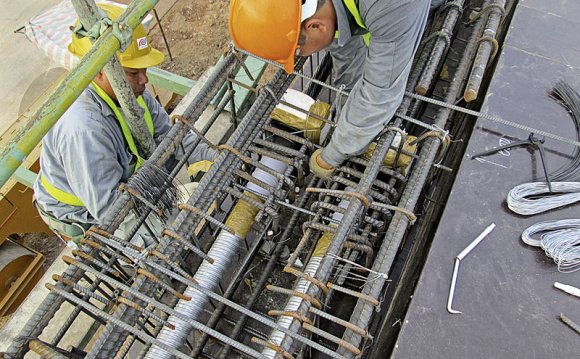
 into the autumn of 1965, beneath the demand of Lt. Col. Richard L. Harris, the 20th Engineer Battalion had been notified for implementation into the Republic of Vietnam. On 5 December 1965, the battalion's equipment ended up being filled regarding USNS Lt. James E. Robinson on Boston Army Terminal. On 14 December, an advance celebration of this battalion left Fort Devens on C-130 aircraft and arrived in Vietnam on 18 December. The total amount of employees had been flown to Oakland, California, where they boarded the USNS William Wiegel and sailed for Vietnam on 9 December.
into the autumn of 1965, beneath the demand of Lt. Col. Richard L. Harris, the 20th Engineer Battalion had been notified for implementation into the Republic of Vietnam. On 5 December 1965, the battalion's equipment ended up being filled regarding USNS Lt. James E. Robinson on Boston Army Terminal. On 14 December, an advance celebration of this battalion left Fort Devens on C-130 aircraft and arrived in Vietnam on 18 December. The total amount of employees had been flown to Oakland, California, where they boarded the USNS William Wiegel and sailed for Vietnam on 9 December.
USNS General William Weigel
On the first-day of January 1966, the battalion arrived at Cam Ranh Bay, Vietnam. The battalion was initially assigned toward 35th Engineer Group at Dong Ba slim, website associated with Army airfield related to Cam Ranh Bay. The 513th Engineer Company (Dump vehicle) and 584th Engineer Company (Light Equipment) had been attached to the battalion the whole time it was at Dong Ba slim. By May of 1966 the twentieth Engineers using its affixed devices had graded the aviation cantonment location, built seventy-five aircraft parking shields, finished a cargo jet parking area, and begun construction of a taxiway to your finished runway.
The battalion relocated from Ninh Hoa to Ban me personally Thuot on 5 October 1966, after that shortly thereafter shifted to Pleiku [map, photographs, memoirs] included in the 45th Engineer Group. On 10 November 1966, it had been placed directly under the 937th Engineer Group, eighteenth Engineer Brigade, under which it served for the majority of associated with the war.
The twentieth Engineer Battalion (fight) ended up being equipped to perform forward area building, obstacle planning, demolition work and battling as infantry. It offered all non-divisional professional assistance in its area and served as an area building agency for all tasks (especially base building), improving land lines of interaction, and airfield building and rehab. The battalion had been organized with an HHC and 4 line businesses, A through D, with a typical authorized strength of 812 males.
Photos from Ronnie Rutledge, HQ Company, twentieth Designers           
See more Vietnam photographs. Go through the left picture to see a quick note and great photographs addressing September 1968 to November 1969, from Ronnie Rutledge. Click on the correct picture for photos of soldiers while the Pleiku location throughout the period 1969-1970, from Bill Hall.
 The twentieth designers constructed an US specialized Forces/Civilian Irregular Defense Group Camp (Tieu Atar) from December 1967 and finishing in March 1968.
The twentieth designers constructed an US specialized Forces/Civilian Irregular Defense Group Camp (Tieu Atar) from December 1967 and finishing in March 1968.
Images from David E Ferguson, Company C, twentieth Engineers Photos from Jim Bliss, HHC and business D, twentieth Engineers
That is a picture of SP4 Bliss next to the smaller "War Wagon, " a 3/4 great deal truck with an M60 machine-gun. The other photos are associated with the War Wagon mounting a .50cal machine gun on a 2-1/2 great deal vehicle; taken at Camp Enari, 1968-1969.
Charles Miller served in Company B, 20th Engineers in Vietnam from 1969 to 1970. Click their fundamental education picture, at remaining, to see papers from his tour of duty with the battalion, to add his solution inside artwork of this Engineer Hill dispensary.
Death of Battalion Commander
On 12 May 1970 while on an examination trip, the battalion commander, LTC Fred V Cole, had been killed when his helicopter had been shot down near Pleiku. See their memorial home elevators the Vietnam Veterans Memorial.
The twentieth Engineers produced a "yearbook" for 1970. Click on the picture above to look at guide.
Included tend to be hundreds of photographs of twentieth Engineer soldiers, services, and activities.
Fighting carried on in Cambodia during early February before and after Southern Vietnam started its U.S.-aided drive-in Laos. Lam Son 719, the most significant operation in this campaign, had been performed off I Corps by Vietnamese soldiers with US fire and atmosphere support. Their particular item was to slice the Ho Chi Minh Trail and destroy adversary basics at Techepone, Laos. The procedure contains four levels. In Phase I, labeled as process DEWEY CANYON II, the 1st Brigade, United States fifth Infantry Division (Mechanized) occupied the Khe Sanh area and cleared Route No. 9 up to the Laotian border. Meanwhile, the united states 101st Airborne Division conducted diversionary functions in the A Shau Valley. The US 45th Engineer Group, because of the 20th Engineer Battalion, had the goal of repairing Route No. 9 as much as the Laotian edge. This lasted from 30 January to 7 February 1971.
In Vietnam the twentieth Engineers took part in 14 campaigns:
Defense
Counteroffensive
Counteroffensive, Phase II
Counteroffensive, Phase III
Tet Counteroffensive
Counteroffensive, State IV
Counteroffensive, Phase V
Counteroffensive, Phase VI
Tet 69/Counteroffensive
Summer-Fall 1969
Winter-Spring 1970
Sanctuary Counteroffensive
Counteroffensive, Phase VII
Consolidation I
During Vietnam, the battalion earned three Meritorious device Citations (with streamers embroidered Vietnam 1966-1967, Vietnam 1967-1968, and Vietnam...
YOU MIGHT ALSO LIKE












